
Rewilding Derbyshire
Rewilding seeks to reinstate natural processes and, where appropriate, missing species - allowing them to shape the landscape and the habitats within
What is rewilding?
When we leave nature undisturbed, ’rewilding’ happens, and habitat development follows its own, wonderfully unpredictable course. As far as possible, we stay well back …no vehicles, no pollutants, no heavy boots on the ground. What we then see is remarkable: nature increasing the abundance of plant and animal communities to levels that are far higher and more complex than human management could achieve.
This nature-led approach will see animals and plants change the habitat themselves. Which could look like more wildflowers, grasslands, scrub and small trees - but what emerges will be guided by nature.
Thornhill Carr is a brilliant example of rewilding. This 30 hectare area of former farmland is a unique site, rare within The Peak District National Park for its unmanaged wildness. It is currently home to a fantastic array of wild woodland, scrub, beautiful wildflower meadows and a large family of badgers.
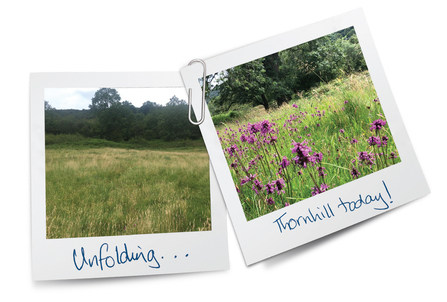
Why is rewilding important?
Our living landscape was once a carpet of borderless green, but today many nature reserves and wild spaces are isolated – leaving wildlife unable to escape threats such as predators and food shortages. Our mission is to bridge those green gaps through natural rewilding, forming a network of safe havens across Derbyshire, restoring nature’s freedom to find new territory, and helping all our wildlife to flourish.
Benefits of Rewilding
Draws down carbon from the atmosphere
We calculate that restoring and protecting native woodland, peat bogs, heaths and species-rich grasslands over six million hectares could sequester 47 million tonnes of CO2 per year. This is more than a tenth of current UK greenhouse gas emissions.
Helps wildlife adapt to climate change
Rewilding key areas and connecting them through a mosaic of nature-rich habitats will allow wildlife to move and habitats to adapt as climate zones shift north. This has the potential to save a significant number of species from climate-driven decline or extinction
Reverses biodiversity loss
Rewilding marks a change in direction, moving from continued managed decline to restoring the abundance of Britain’s wildlife and its missing species. We know nature will bounce back on land and in seas, rivers and lakes, but only if we take the right actions to help it.
Supports diversified economic opportunities
Rewilding has the potential to help rural and coastal communities prosper through nature based enterprises, production and employment opportunities. This won’t just happen by itself but will take imagination and coordinated local action to realise.
Improves our health and wellbeing
More nature is better for all of us, providing clean water, flood defences, food, healthy soils, breathable air, and good health. It’s important that we work to ensure everyone has access to wilder nature, even in our urban areas.
Restores lost ecosystems through species reintroduction
Reintroducing lost species such as beavers isn't just about the reintroduction of a species - it's about the restoration of an entire ecosystem that has been lost.
By reintroducing beavers and keeping human impact low, our reserve at Willington has become a mosaic of prime wetland habitats, from small and large ponds, canals, vegetated margins, wet meadows and areas of mud and silt trapped behind dams. They are ecosystem engineers, and experts in wetland management, creating more diverse habitats for wildlife from the smallest invertebrates to large mammals.
Find out more about our beaver reintroduction below:
Debunking the myths!
There are many myths associated with rewilding and so we asked our Rewilding Projects Officer, Ruth, to debunk some of those rewilding myths!
Myth 1: Rewilding is just shutting the gate and letting the scrub takeover
This is not true! Yes, scrub is usually heavily controlled in a labour intensive process, over the years this has led in the decline of scrub habitats and the loss of species like turtledoves, nightingales and whitethroats. But, rewilding is all about letting the right habitat exist in the right place, so often rewilding will include the introduction of big hairy cows which don't mind eating the scrub and creating a clearer environment for wildflower meadows, or woodland clearings. This mimics a natural landscape made up of different, unique habitats.
Myth 2: Rewilding leads to the release of dangerous wild animals
Rewilding is rebalancing our natural ecosystems and sometimes that means reintroducing lost species, but only when we have the wild space to properly support them! We have laws protecting us from dangerous animals, but there are many species such as beavers or pine martens that are missing from the Peaks and could act as ‘ecosystem engineers’ in their natural niches, creating healthier habitats without human intervention. Big predators do have a natural role in the environment but the Peak District does not have the space to sustain them safely just yet, so humans will continue filling in their role for now.
Myth 3: Rewilding is only suitable for nature reserves
Rewilding is just the restoration of natural processes. This can be an act as small as planting native wildflowers in your window-box to create a feed-stop for wild bees. It can also be a huge project like the bog restoration in the uplands and tree-planting down into the valleys which would hold water and prevent flooding. We are starting to recognise more natural processes as we rewild our nature reserves, but we hope that as we share our learning other land-mangers will be encouraged to do so too.
Myth 4: The Peak District is a man-made landscape, we’ve lost our native wildlife and we can never recreate it
We have bountiful reservoirs of wildlife right across the Peak District, our nature reserves hold rare species and habitats that we can’t wait to see spill out into the surrounding landscapes! Yes, the Peak District is currently a nature-depleted landscape and we see continuing declines in species and habitats, but with the uptake of rewilding across the region, we are beginning to see nature guide its own recovery.
Myth 5: All grazing species are bad for the environment
Grazing animals have been shaping our landscapes for thousands of years, large herbivores such as Auroch, Elk, Wild horse, Wild boar, Red deer and Bison roamed Derbyshire’s landscape. While their grazing may not have looked like any more than the average feeding time for these creatures, their actions were fundamental to the natural development of diverse and dynamic habitats within a complex, healthy and functioning ecosystem. Grazing was, and remains, the most natural and effective way of managing many habitats, shaping the land in ways that human interventions and machinery simply cannot replicate.
What does rewilding look like?
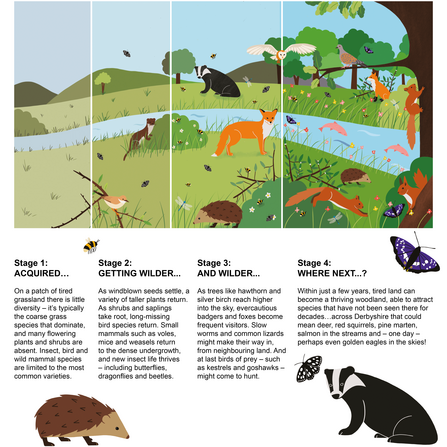
Rewilding Allestree Project
Watch the video below to learn about rewilding in action:
The massive Community Rewilding Project at Allestree Park is the UK's biggest rewilding project.
Its three main aims are:
- To have good quality wildlife that will lead nature's recovery.
- To ensure people are benefiting from connecting with nature on their doorstep and will support in acting for the environment.
- To be an exemplar urban rewilding community project, influencing areas across Derbyshire.
Read more in our blogs
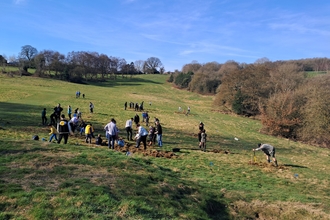
Communities are going wild in Derbyshire!
It is no secret that the world is in a biodiversity and climate crisis, a situation that has made people feel helpless and fearful. In…
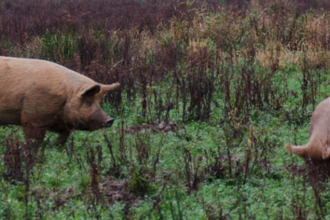
The Role of Pigs in Rewilding
In this blog, we are talking about how rewilding is transforming global landscapes, and at the heart of the UK's movement, the…
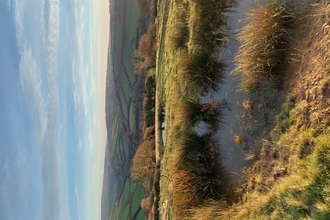
Visit to Nature Returns partner project - Exmoor National Trust
Recently we visited Exmoor in Devon to learn how the National Trust are intervening at scale to kickstart the restoration of habitats.…
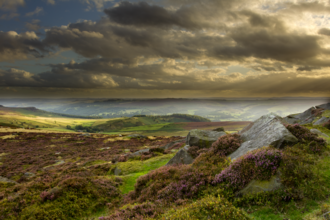
Celebrating 75 Years of National Parks: A Time for Reflection and Bold Action
Today marks the 75th anniversary of the legislation that brought National Parks into being in the UK—a monumental moment in the history…
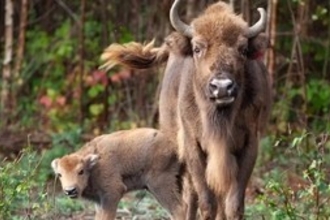
Restoring Balance: The Role of Bison in Rewilding
Following our previous blog about large herbivores, we will now examine one of nature's most powerful agents of change: the…

Large Herbivores - shaping the landscape
Animals have been shaping our landscapes for thousands of years, but some species are more important than others. We call these…






